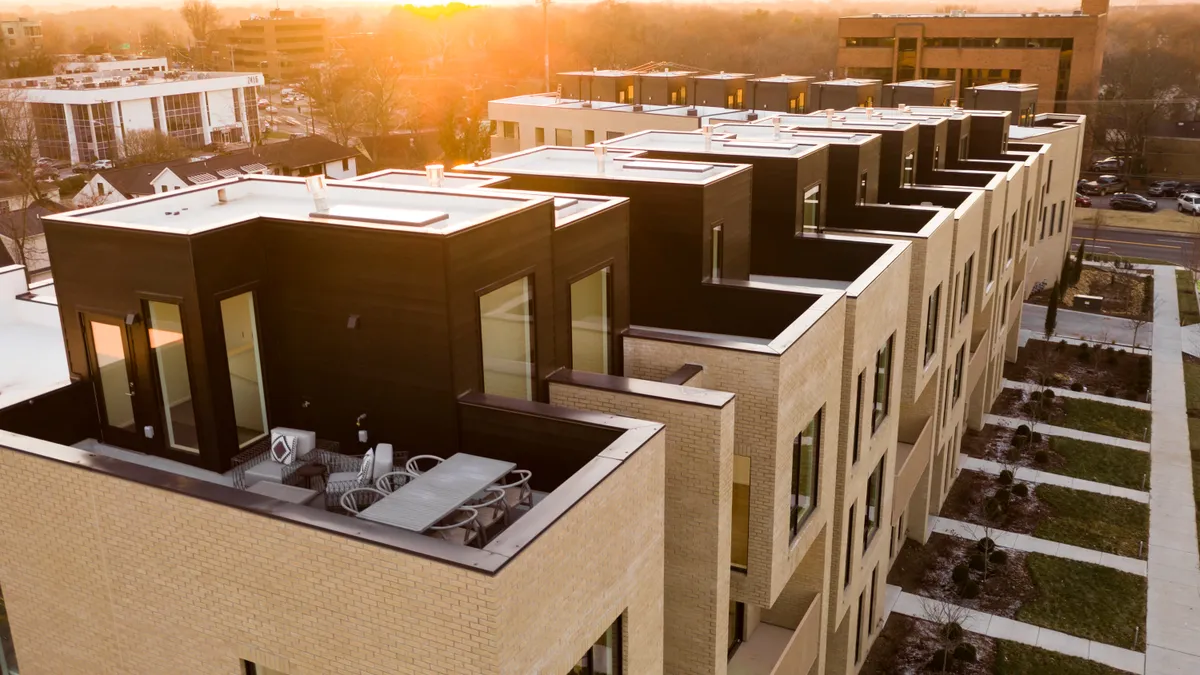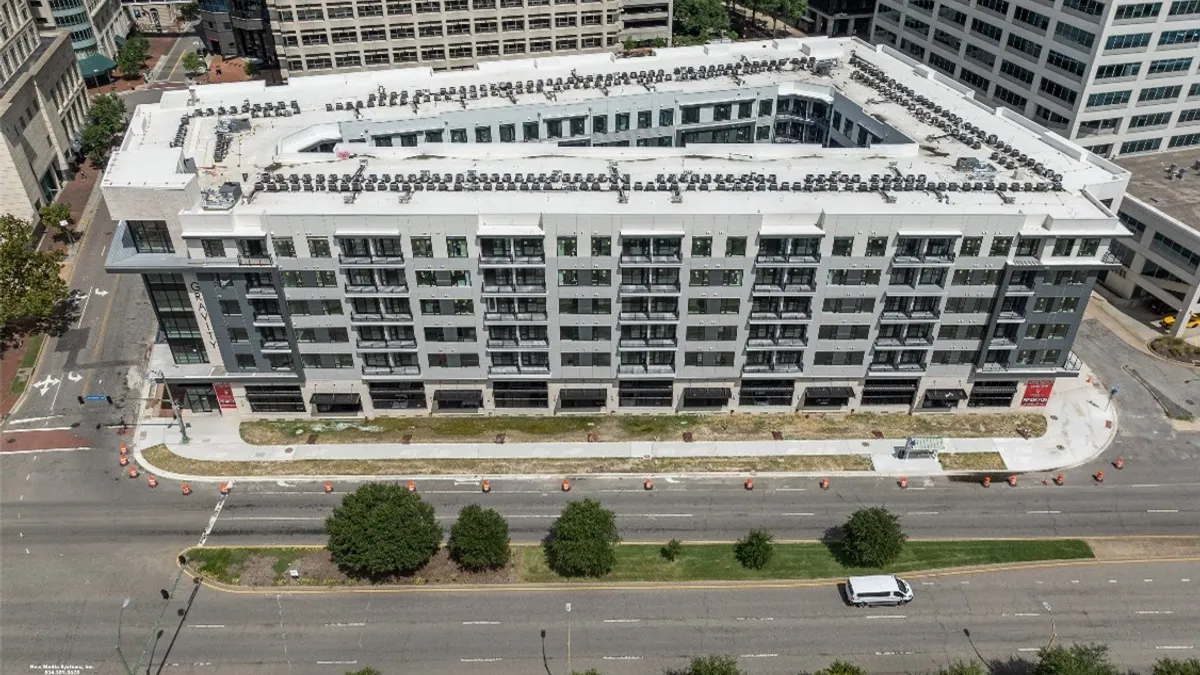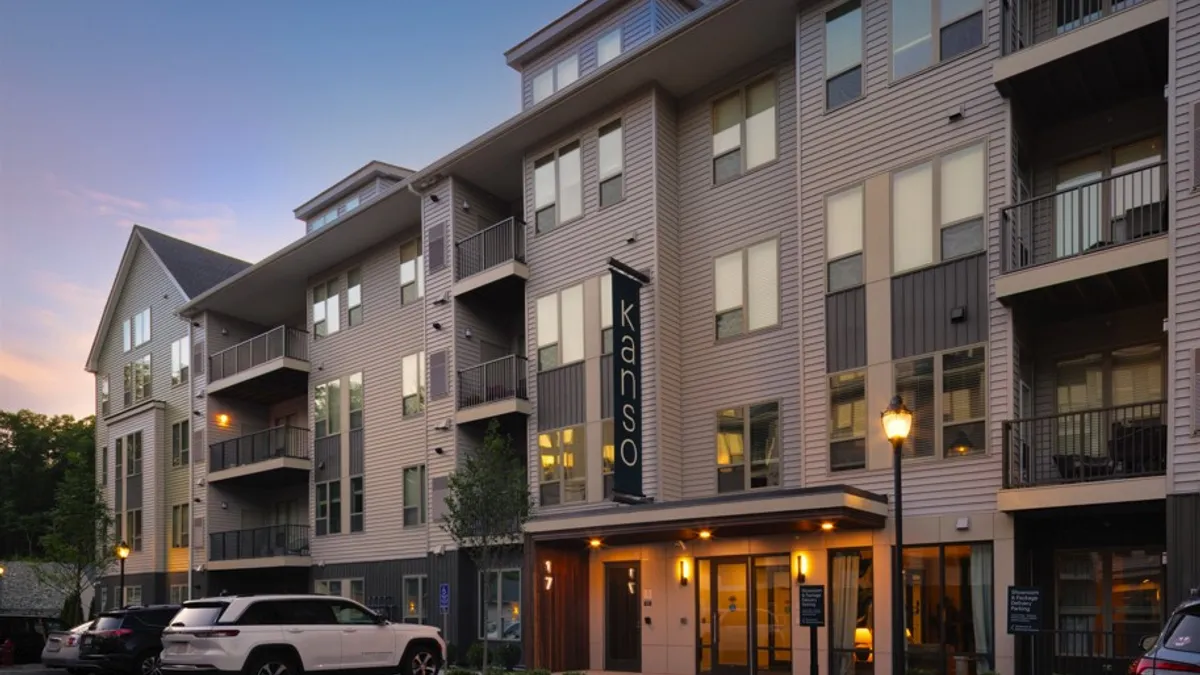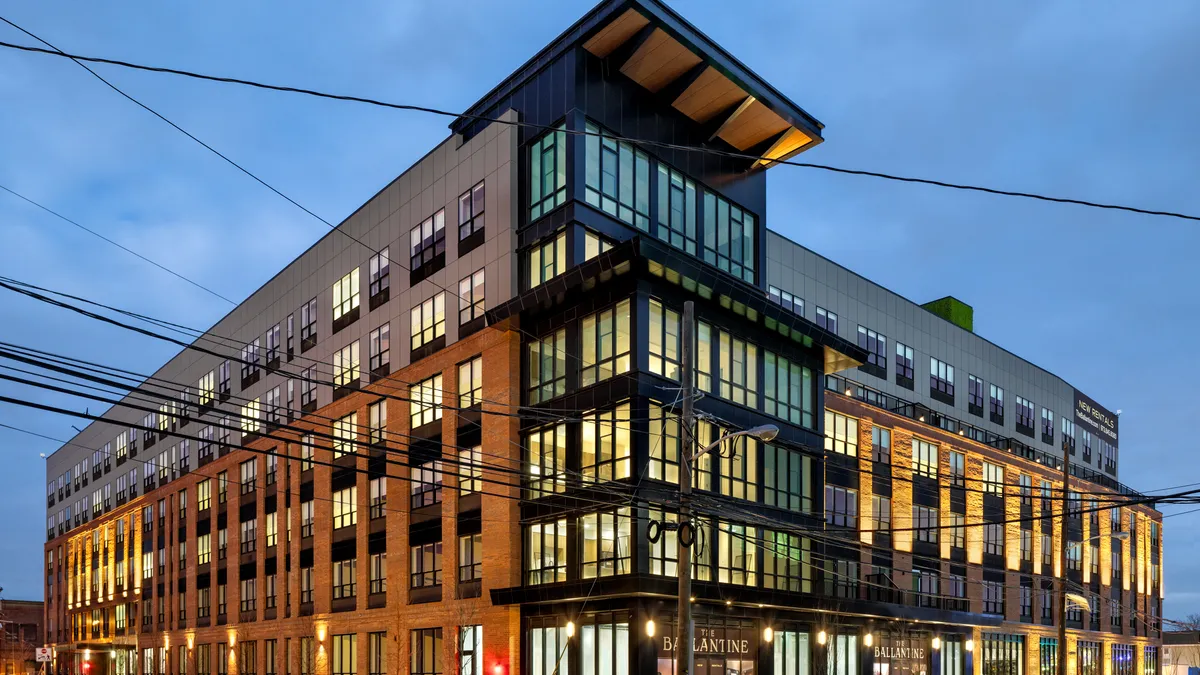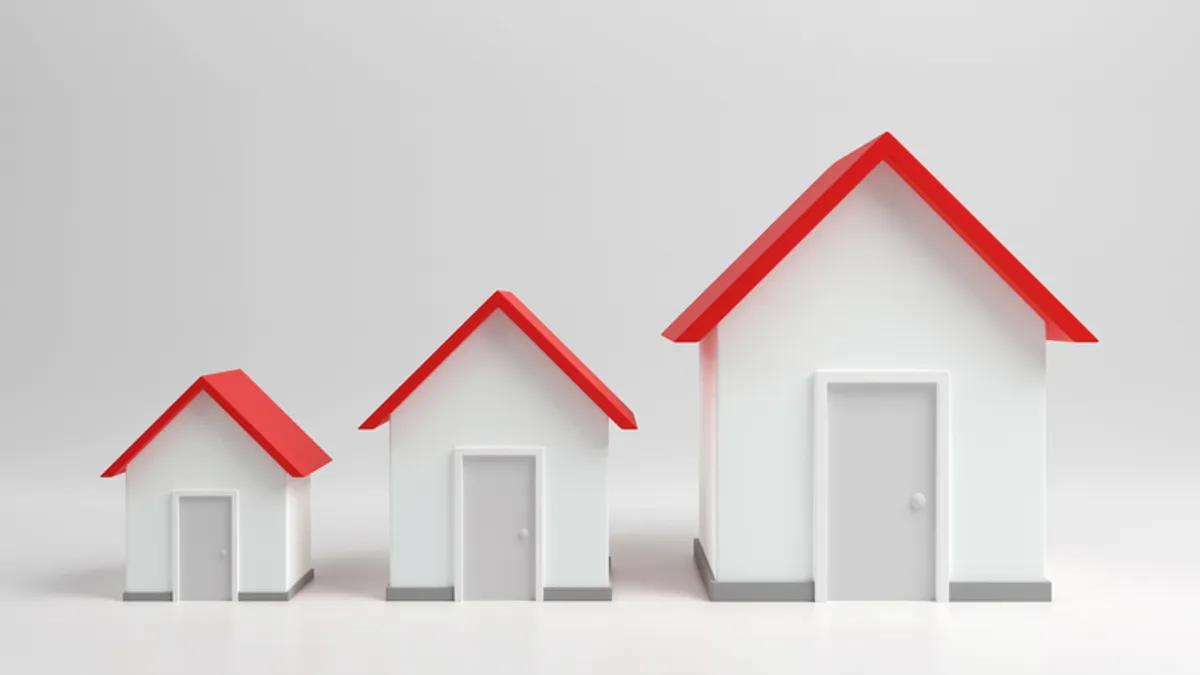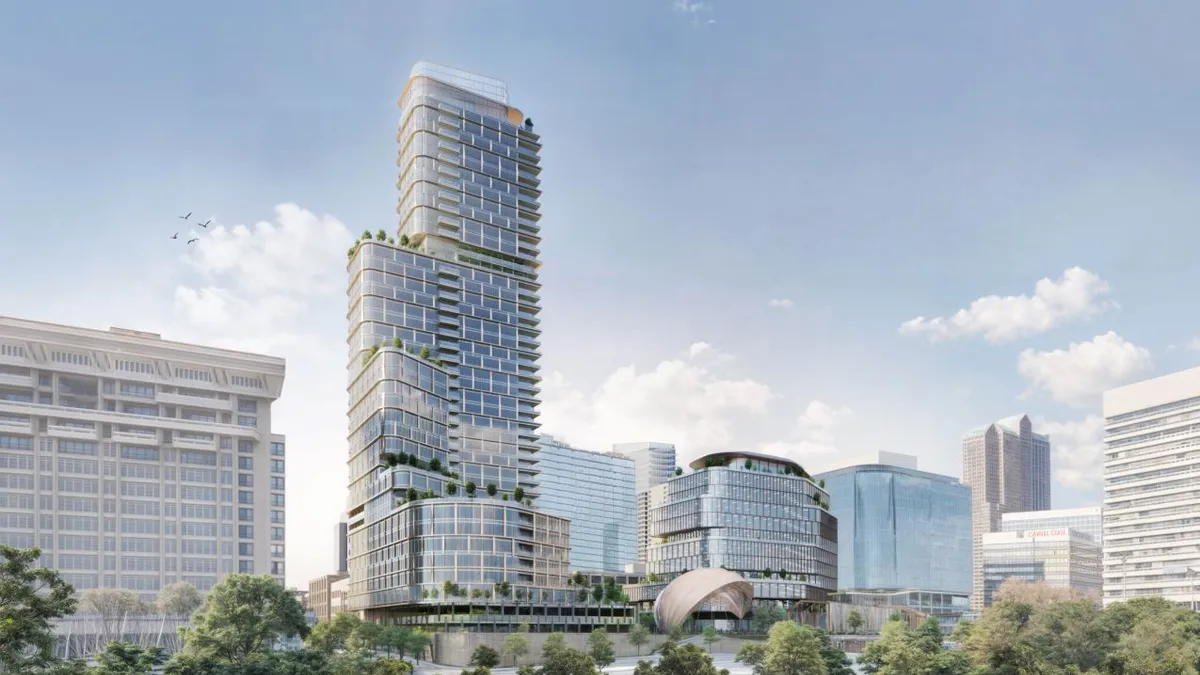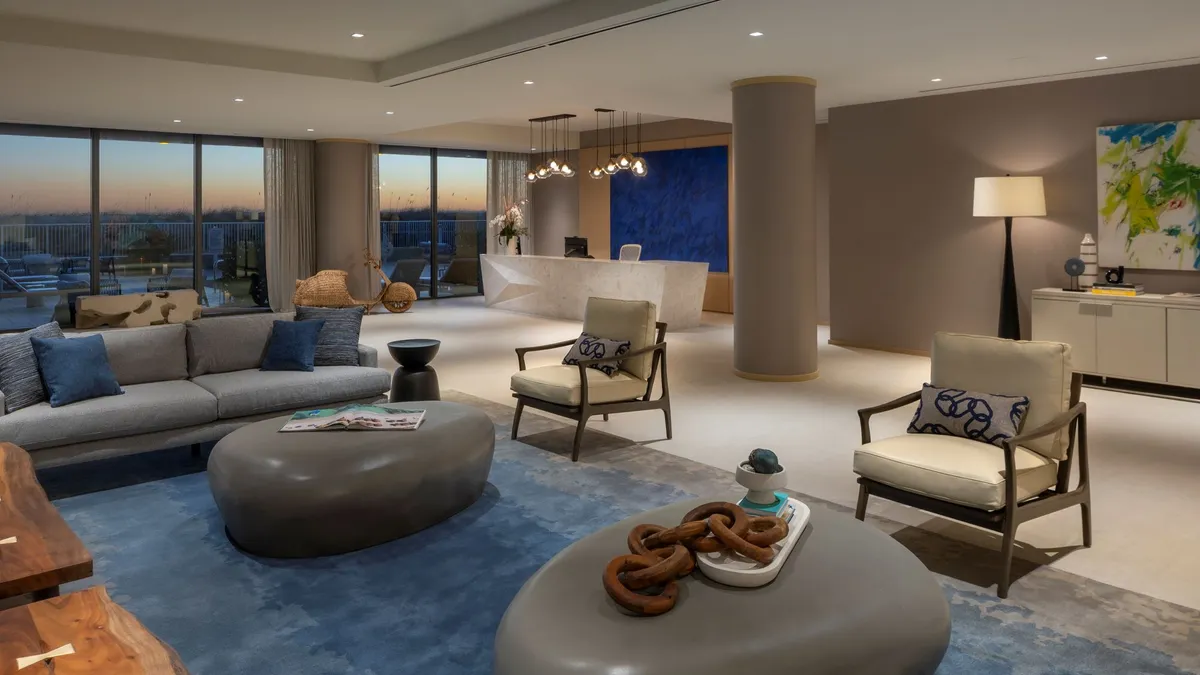Over the last 10 years, Nashville, Tennessee’s new multifamily deliveries have soared. With over 26,000 units under construction, the city’s pipeline is presently the largest in the nation as a percentage of total volume, according to RealPage. This rush comes amid rapid expansion in the area’s population, which is up from 601,000 in 2010 to 689,000 in 2020, according to the U.S. Census.
Architect Jared Bradley, president of Nashville-based development, architecture and design firm The Bradley Projects, attributes this growth — and the changing character of the city’s downtown — to the opening of the Music City Center, a 2.1-million-square-foot convention complex, in 2013.
“[The convention center] completely rewrote the scale of our tourism downtown,” Bradley said.
The city recently ranked first among the 30 most populous cities for restaurants and cities per capita in a StorageCafe analysis. Amazon has also established a base in Nashville, creating an expanded workforce of well-paid professionals.
In this mix of opportunity and in-migration, The Bradley Projects has focused on Nashville’s growing neighborhoods and aims to create new developments that fit within the neighborhood context, all while avoiding the pitfalls of cookie-cutter design or leaning too heavily on the clichéd design tropes Bradley refers to as “honky tonk.” Its portfolio includes Illume, a 78-unit condo property built in 2019; Alina, a 50-unit project built in 2020; and Linden Row, a set of 38 townhomes set to be completed this year.
Here, Bradley talks with Multifamily Dive about urban living preferences, contextual design and the features Gen Z renters are looking for.
This interview has been edited for brevity and clarity.
MULTIFAMILY DIVE: What is the market like in Nashville these days?
JARED BRADLEY: I think one of the smartest things Nashville ever did for future economic stability was creating a world class convention center. Now we compete with Las Vegas for conventions, and that brings so many people to the downtown core. To me, that convention center created a true destination city center for Nashville.
I feel like we have several decades ahead of us of fine tuning, adjusting and figuring out how people are going to live in this new environment. There's nothing more inspiring than trying to figure out how people are going to use a brand new city. And we have a ton of work to do.
We lack so many crucial elements like transportation, housing, public space and affordability. But that's what we do as developers and architects and builders. The downtown Nashville development area has an entire surrounding city around the city that needs love and needs support.
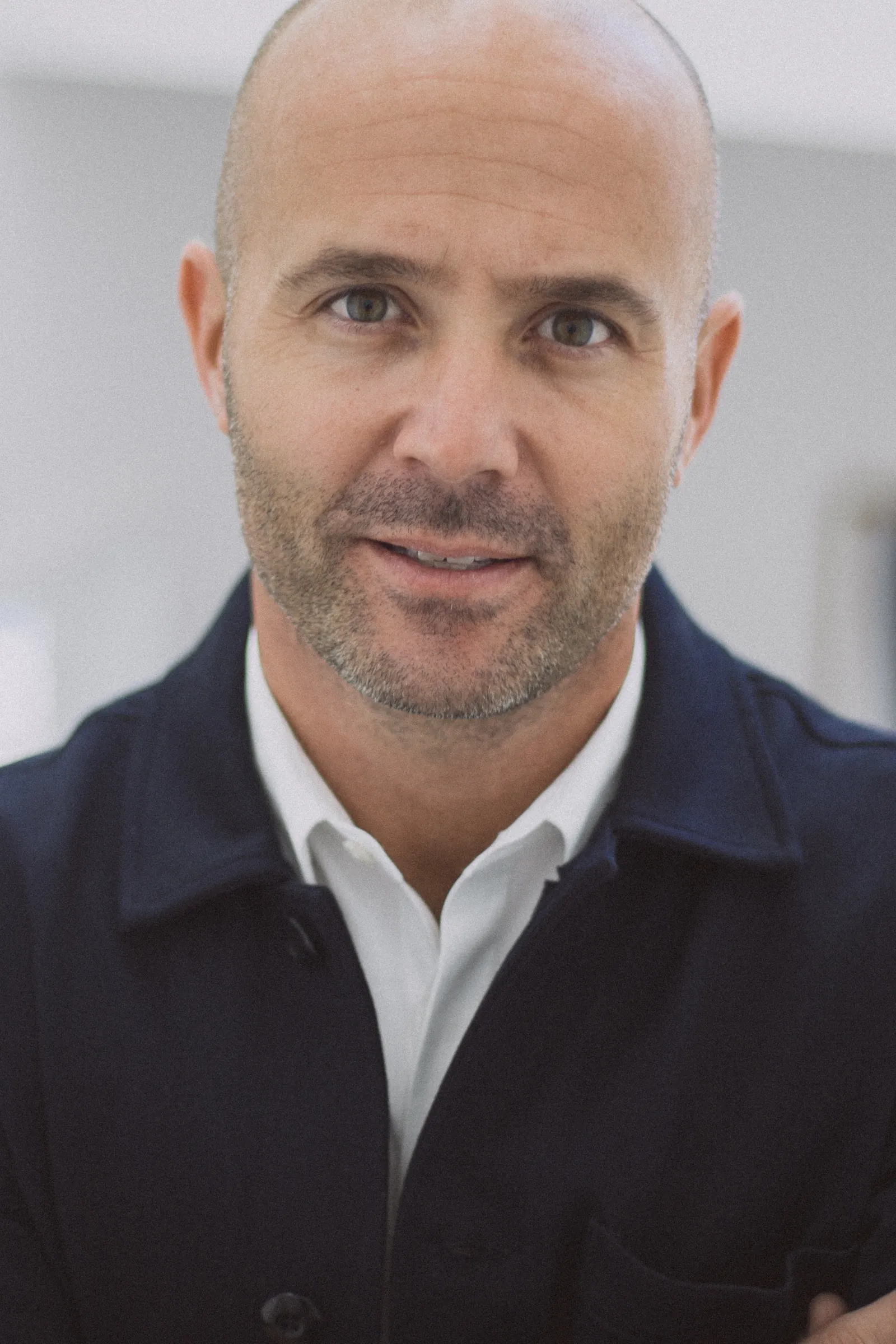
How do your properties serve the needs of their demographic?
Nashville, like many other cities, has these localized pockets of varying demographics surrounding the core — and multifamily is crucial around these edges. So whenever we look at a new opportunity, we have to stop and ask, what belongs here? And who will be using it? And how can this help the community grow and be more healthy and vibrant? And I think it's different every time.
And so when you go into one of those pocketed areas, as a multifamily developer, you have to look at, how does this fit in contextually with the neighborhood? How is this going to fit the scale and the needs of the community and not become this giant, generic shoe box that we dropped in the middle of your neighborhood and said, “You're welcome, here you go?”
My favorite buildings that we've ever done, as a company, are the buildings that you cannot pick up and sit anywhere else, because they fit so well into the site, that landscape.
As a developer, we have all the metrics, we have all the performance, we have all the numbers we need to hit, we have all the yield we need to hit. We understand all of that. But if you put all that aside for a second, the projects that work best in Nashville are the projects that respond to the contextual elements of the city that you're in and the people who live there.
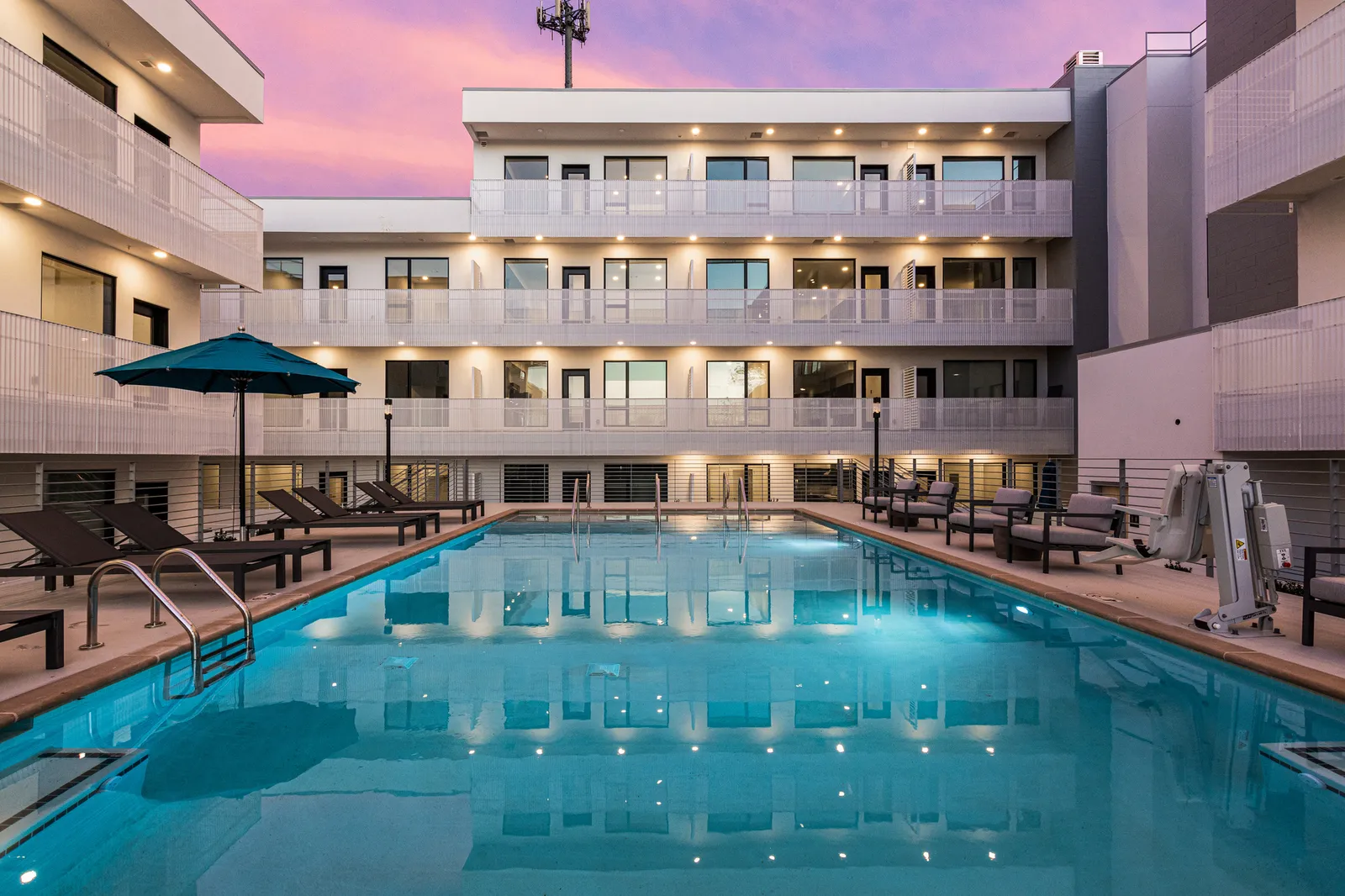
What sort of regional design elements do you add into your communities?
What's funny is, we don't do things that I think most marketing people think of [for Nashville]. We don't do leather, or barnwood, or antique light bulb signs, or any honky tonk or anything like that.
The biggest thing is really just capturing views throughout the city. If you can do that, you're constantly reminded of where you're at. There's tools that we employ in our projects where we look at the site and we say, “Look, you can see Fort Negley from here,” which is a historic Civil War site.
So let's turn the building slightly, this part of the building this way, and all these units are going to have a view out to Fort Negley. Then over here you can see the skyline of downtown, so on this side of the building, let's make sure that the windows are all capturing shots of downtown.
How have the social changes spurred on by COVID-19 changed urban living and development?
For our urban living experience, I think it's really changed the perspective of how we see ourselves and what our purpose in life is. I think it's created this whole “life is short” mentality. And so many people, and particularly the younger demographic, want to immediately skip over the hard work of paying dues and growing and learning in life. They just want to get right to the good life.
I think that's a human response to what we've all been through. I'm not judging that, I'm just trying to respond to what I'm seeing culturally. And what that tells me as the developer is that we need to create more retreat-like spaces and give people more of a perception of luxury with outdoor space and comfortable social spaces for people to thrive in and hang out with people.
What are some of the most common amenities you're putting in new apartments?
We pride ourselves on not chasing trends, but this is one of those areas where I swear we chase every trend they throw at us. We've tried everything from bocce ball courts to meditation rooms, music writing rooms and small recording studios. And then of course we’ve tried all the standards like pet washing areas, pool decks and bars, package sorting rooms and business centers and all that.
What’s interesting is, none of it gets used a lot. But I think it's important that you have them. I look at the amenity areas as being more of a marketing and outreach tool to get people interested in the property.
To answer your question directly, I would say: pet centers, pet facilities, pickleball — programming outdoor spaces in a way that's more living room–like and comfortable and private, even though it's more outdoors. Those are things that I've really been trying to focus on in our projects.
I think the amenity that I most try to focus on is the architectural quality — so when they walk in our buildings, they immediately prefer our building. Of course, all those amenities are important. I'm just trying to calculate, how do people respond to that? And is it that important?



